Musée Ureuk (우륵박물관)
0m 23693 2021-02-16
98 Gayageum-gil Goryeong-eup Goryeong-gun Gyeongsangbuk-do
+82-54-950-7136
Musée Ureuk est un musée dédié
au Gayageum (un instrument traditionnel coréen de douze cordes) et Ureuk
est l'inventeur du Gayageum et un grand musicien de l'époque. Le Musée
Ureuk est le seul musée de ce genre qui rassemble, conserve et présente
des pièces qui permettent aux visiteurs d'apprécier plus profondément
la beauté et l'histoire de l'instrument.
Terminal des bus interurbain de Goryeong
1.5 Km 1364 2015-11-26
50-3 Heonmun-ri Goryeong-eup Goryeong-gun Gyeongsangbuk-do
Site historique de Dae Gaya à Goryeong (고령 대가야유적지)
2.2 Km 2714 2020-06-18
1203, Daegaya-ro, Goryeong-eup, Goryeong-gun, Gyeongsangbuk-do
+82-54-950-7103
Le village de Goryeong à 4 heures de Séoul abrite de nombreux vestiges de Dae Gaya, un Etat qui vit le jour vers le premier siècle, en aval du fleuve Nakdong au sud de la péninsule coréenne. Cet Etat connut la prospérité et développa sa propre culture pendant 520 ans (de 42 à 562) jusqu’à sa chute au 6ème siècle. Il fut alors partagé entre Silla (-57 à 935) et Baekje (-18 à 660), et condamné à l’oubli.
Au cours de la 23ème année (562) du règne du roi Jinheung (540~576) de Silla, ce lieu fut appelé Dae Gaya-gun et durant la 16ème année (757) du règne du roi Gyeongdeok (742-765), son nom fut changé en Goryeong-gun.
C’est un lieu où l’on peut observer divers vestiges culturels tels que Jisan-dong gobungun, des tombeaux traditionnels, le centre d’exposition des tombes royales de Dae Gaya ou bien encore les gravures sur le rocher de Yangjeon-dong constituant un des principaux vestiges de l’âge préhistorique ( trésor numéro 605).
Un tombeau de plus de 20 mètres de diamètre s’élève sur le mont et 195 tombes de plus en plus petites se dessinent plus bas sur les flancs. Le plus grand tombeau qui se trouve au sud serait celui du roi Geumlim tandis que les membres de la famille royale et les nobles seraient enterrés dans les autres grandes tombes.
Daegaya wangneung jeonsigwan, le centre d’exposition des tombes royales de Dae Gaya, est une réplique exacte du 44ème ancien tombeau qui décrit bien le système d’inhumation de personnes vivantes durant l’âge préhistorique. Dans la salle d’exposition en forme de dôme, plusieurs objets mis à jour sont exposés comme des sarcophages de vivants, des outils en fer et des poteries.
Musée de Daegaya (대가야박물관)
2.3 Km 10959 2021-01-23
1203, Daegaya-ro, Goryeong-eup, Goryeong-gun, Gyeongsangbuk-do
+82-54-950-7103
Le musée de Daegaya est consacré à l’histoire, à la culture et aux coutumes de l’ancien royaume du grand Gaya (42 – 562). Il abrite le pavillon de l’histoire de Daegaya, et le pavillon de la tombe royale de Daegaya.
Le pavillon de l’histoire de Daegaya présente l’histoire et la culture du royaume au travers de reliques datant de l’âge de pierre jusqu’à l’âge moderne. Le hall des expositions temporaires accueille une à deux fois par an des expositions spéciales axées sur des aspects particuliers du royaume. Le hall d’activité des enfants propose toutes sortes de programmes permettant aux enfants de découvrir le royaume du Grand Gaya. Le centre d’exposition en plein air abrite plusieurs objets de la vie de tous les jours, comme par exemple une pirogue, un grenier de stockage, un fourneau de fer ou encore des reliques bouddhistes.
Le pavillon de la tombe royale de Daegaya est la version restaurée du tumulus n° 44 de Jisandong, première soonjang (enterrement des vivants avec les morts) découverte en Corée. Le pavillon met l’accent sur les reliques découvertes dans les anciennes tombes de Jisandong. Le pavillon en forme de dome fait 37 m de diamètre et 16 m de haut.
Les objets exposés incluent une réplique de la couronne d’or et des decorations de Goryeong (trésor national n° 138), une copie de l’ancienne tombe et sa fresque murale de Goa-ri à Goryeong (site historique n° 165), la pagode à trois étages du temple Banryongsa et la cloche de bronze. On peut visiter non loin l’académie confucéenne de Goryeong, les pétroglyphes de Yangjeondong (trésor n° 605), la forteresse Jusanseong (site historique n° 61), ou encore le monnument Ureuk, les pilliers de bannière de Jisandong (trésor n° 54).
Festival de découverte de Daegaya à Goryeong (고령대가야체험축제)
2.5 Km 8131 2022-09-22
1216, Daegaya-ro, Goryeong-gun, Gyeongsangbuk-do
- Centre d'appels 1330 : +82-54-1330 (coréen, anglais, japonais, chinois)
- Pour obtenir plus d'info : +82-54-950-6424 (uniquement coréen)
Daegaya (42-562 après JC) fut une nation ayant occupé la province de Gyeongsangnam-do en Corée. Elle fut si sophistiquée que même à cette période, elle possédait des standards culturels extrêmement élevés. Le gayageum (instrument traditionnel coréen à douze cordes) y fut d’ailleurs créé et la nation joua un grand rôle dans l’établissement d’une culture musicale. Des échanges ont été établis avec la Chine et le Japon et des reliques indiquent qu’elle eut une influence significative dans d’autres parties du monde. Ce festival vous immergera dans l’ancienne Histoire de Daegaya à travers des programmes tels qu’une exposition de reliques, et la fabrication de mokseons (bâteaux en bois) utilisés par les habitants pour commercer avec les autres sociétés. Le festival est relié à un village fermier à proximité, d’où vous pourrez cueillir des fraises et découvrir le mode de vie dans les fermes coréennes.
Site touristique historique de Daegaya (대가야 역사테마 관광지)
2.5 Km 6404 2021-12-28
1216, Daegaya-ro, Goryeong-gun, Gyeongsangbuk-do
+82-54-950-7005
Erigé à l’emplacement de l’ancienne capitale de Daegaya, ce site touristique permet de découvrir l’histoire du royaume de Daegaya, qui a vu l’avènement des premières poteries et outils en fer, ainsi que de la culture du gayageum (cithare coréenne). Les diverses installations (cinéma en 4D, reliques, expositions, sentier forestier...) vous offrent un véritable voyage dans le temps. Daegaya était une fédération dont la création remonte avant notre ère, jusqu’à son absorbtion par le royaume de Silla en 562. Elle se distinguait par son commerce extérieur indépendant, l’excellence de sa métallurgie, et ses reliques culturelles incluant le gayageum. L’intérêt grandissant envers Gaya fait que l’on ne parle plus de l’époque des Trois Royaumes (Goguryeo, Baekje et Silla), mais des Quatre Royaumes en incluant Gaya. Gaya fait également l’objet de nombreuses recherches académiques.
Le siège du gouvernement de Gaya se trouvait autrefois à Goryeong. Ainsi, on peut y trouver de nombreuses reliques de cette période. Le site touristique historique de Daegaya a pour but de mettre en place des évènements culturels et académiques, de restructurer la zone culturelle de Gaya à forte valeur documentaire, et de restaurer et propager la culture de Gaya.
Chuwoojae House [Korea Quality] / 추우재 [한국관광 품질인증]
8.8 Km 594 2021-04-01
20-1, Gaesil 2-gil, Ssangnim-myeon, Goryeong-gun, Gyeongsangbuk-do
+82-54-956-4022 / +82-10-3207-4022
The village of Gaesil is known as the village of the Seonsan Kim clan. It was established by the descendants of Kim Jong-jik (pen-name: Jeompiljae, 1431-1492), a leading Korean Neo-Confucian scholar and the founder of the Yeongnam Sarim faction during the mid-Joseon period. Boasting over 300 years of tradition, the village is home to sixty households as well as a number of cultural heritages including the head house of Kim Jong-jik (Provincial Folk Material No. 62), Doyeonjae (Provincial Cultural Heritage material No. 111), which is the old village school, and the printing woodblocks for a collection of literary works including Yijonrok (a book about the life and achievements of Kim’s father Kim Suk-ja) written by Kim Jong-jik (Provincial Tangible Cultural Heritage No. 175).
The residents have renovated the village’s earthen walls and hanok houses into a current hanok village, and also run various hands-on experience programs including a hanok stay, a farm product cultivation program, and traditional etiquette and games, thereby offering urban travelers an opportunity to experience a truly rural lifestyle. Chuwoojae House, situated in the heart of the village of Gaesil, has two buildings that are available for rent including the bonchae, which is a single-family house, and the sarangchae, which is a detached building). All guestrooms are equipped with a bathroom and cooking facilities. In particular, the bonchae is heated with a furnace. Guests can use the village public parking lot, but there is also a separate parking lot not far from the house.
Yeonpung Gotaek (the Old House of Munchung) [Korea Quality] / 연풍고택/문충고가 [한국관광 품질인증]
8.8 Km 7064 2020-09-09
44, Gaesil 1-gil, Ssangnim-myeon, Goryeong-gun, Gyeongsangbuk-do
+82-54-956-4022 / +82-10-3207-4022
Located in the village of Gaesil in Hapga-ri, Ssangnim-myeon, Goryeong-gun, Gyeongsangbuk-do, the Old House of Yeonpung is an historic 150-year-old house, and was formerly the anchae (the inner house) among the four structures built by the current owners’ ancestor, who served as the governor of Yeonpung-hyeon, Goesan-gun, Chungcheongbuk-do. The house was restored after being bombed during the Korean War, and is currently is used to accommodate visitors or for village events.
The Old House of Yeonpung is situated behind Hwasanjae Pass, which is the traditional wedding experience site of Gaesil village. It is considered a propitious site according to geomantic theory as there is a bamboo forest to its rear. During restoration work in 2010, the large anchae, which covered about 2,644m2, was renovated into a modern structure with four rooms.
In particular, the Juksil and Maesil rooms are very large, making them ideal for families and groups. A separate building with a large courtyard and a BBQ facility is available for guests who want to cook or have a barbecue. The charming courtyard comprises a well, a bench, and various flower trees.
Known as the village of the Seonsan Kim clan, Gaesil Village was founded by the descendants of Kim Jong-jik (pen-name: Jeompiljae, 1431-1492), a leading Korean Neo-Confucian scholar of the early Joseon period who died during the Literati Purge of 1498. The head house of Kim Jong-jik (Provincial Folk Material No. 62) and Doyeonjae (Provincial Cultural Heritage Material No. 111), the old village school, are also situated in the village. In addition, the nearby Daegaya Museum displays the writing accessories of Kim Jong-jik (Provincial Tangible Cultural Heritage No. 209).
The village is also known as Gaehwasil, meaning “a beautiful valley with blooming flowers” as it is surrounded by a flower-covered mountain called Mt. Hwagaesan, a 350-year-old bamboo forest, and Jeopmubong Peak, which is said to resemble a fluttering butterfly. Over 80% of the village houses are traditional hanok buildings nestled amid a cozy environment.
During the Campaign to Create Beautiful Communities conducted in 2001 and the Farm Experience Village Development Project in 2005, the village’s hanok were renovated or entirely rebuilt, earthen-stone walls were built, walking paths created, and refined landscaping works carried out, establishing the village in its current form. Furthermore, a village shelter, experience center, Internet café, and other facilities were built for the convenience of residents and visitors alike. In recognition of the villager’ efforts to revitalize their community, Gaesil was awarded the presidential citation at the Korea Rural Village Awards in 2011.
Designated as a NongHyup’s Farm Stay Village in 2003, Gaesil operates a wide variety of hands-on experience programs relating to nature, agriculture, and local traditions, such as collecting sweet potatoes and rice planting; Korean traditional etiquette and tea ceremony; kite making and straw handicrafts; traditional food experiences such as yeot (Korean hard taffy) and yugwa (deep-fried sweet rice cakes); traditional games such as riding on a swing and neolttwigi (Korean see-saw); as well as loach fishing, ice sledding and so on. Gaesil Village, a representative farm stay village that “blooms” in every season, attracts around 50-60,000 visitors every year.
Ungidaek House [Korea Quality] / 개실마을영농조합법인(웅기댁) [한국관광 품질인증]
8.9 Km 5951 2020-09-09
32, Gaesil 1-gil, Ssangnim-myeon, Goryeong-gun, Gyeongsangbuk-do
+82-54-956-4022 / +82-10-3207-4022
Ungidaek House of the Gaesil Village Farming Association Corporation is distinctive for its red clay exterior. This cozy hanok comprises two rooms: Juksil, which accommodates 6 people, and Maesil, which is suitable for 4 people. Each room is decorated with white wallpaper and a red clay floor sheet, and is equipped with TV, air-conditioner, toiletries, hairdryer, table, and other amenities. Each room has an ensuite bathroom and cooking equipment.
Known as the village of the Seonsan Kim clan, Gaesil Village was founded by the descendants of Kim Jong-jik (pen-name: Jeompiljae, 1431-1492), a leading Korean Neo-Confucian scholar of the early Joseon period who died during the Literati Purge of 1498. The head house of Kim Jong-jik (Provincial Folk Material No. 62) and Doyeonjae (Provincial Cultural Heritage Material No. 111), the old village school, are also situated in the village. In addition, the nearby Daegaya Museum displays the writing accessories of Kim Jong-jik (Provincial Tangible Cultural Heritage No. 209).
The village is also known as Gaehwasil, meaning “a beautiful valley with blooming flowers” as it is surrounded by a flower-covered mountain called Mt. Hwagaesan, a 350-year-old bamboo forest, and Jeopmubong Peak, which is said to resemble a fluttering butterfly. Over 80% of the village houses are traditional hanok buildings nestled amid a cozy environment.
During the Campaign to Create Beautiful Communities conducted in 2001 and the Farm Experience Village Development Project in 2005, the village’s hanok were renovated or entirely rebuilt, earthen-stone walls were built, walking paths created, and refined landscaping works carried out, establishing the village in its current form. Furthermore, a village shelter, experience center, Internet café, and other facilities were built for the convenience of residents and visitors alike. In recognition of the villager’ efforts to revitalize their community, Gaesil was awarded the presidential citation at the Korea Rural Village Awards in 2011.
Designated as a NongHyup’s Farm Stay Village in 2003, Gaesil operates a wide variety of hands-on experience programs relating to nature, agriculture, and local traditions, such as collecting sweet potatoes and rice planting; Korean traditional etiquette and tea ceremony; kite making and straw handicrafts; traditional food experiences such as yeot (Korean hard taffy) and yugwa (deep-fried sweet rice cakes); traditional games such as riding on a swing and neolttwigi (Korean see-saw); as well as loach fishing, ice sledding and so on. Gaesil Village, a representative farm stay village that “blooms” in every season, attracts around 50-60,000 visitors every year.
Lang Studio [Korea Quality] / 랑 스튜디오 [한국관광 품질인증]
8.9 Km 4442 2019-12-05
37, Gaesil 1-gil, Ssangnim-myeon, Goryeong-gun, Gyeongsangbuk-do
+82-54-956-4022 / +82-10-3207-4022
The Lang House of the Gaesil Village Farming Association Corporation is a hanok style of accommodation that has one spacious guestroom consisting of a bedroom, kitchen and bathroom, with a capacity of 4 to 6 people. This tile-roofed hanok with a wooden door and white walls is fully equipped with all the modern amenities including TV, fridge, air-conditioner, toiletries, Internet, cable and so on. Guests can cook with the cooking utensils provided in the kitchen and hold a BBQ party outdoors. However, the guests are expected to supply the charcoal themselves.
Known as the village of the Seonsan Kim clan, Gaesil Village was founded by the descendants of Kim Jong-jik (pen-name: Jeompiljae, 1431-1492), a leading Korean Neo-Confucian scholar of the early Joseon period who died during the Literati Purge of 1498. The head house of Kim Jong-jik (Provincial Folk Material No. 62) and Doyeonjae (Provincial Cultural Heritage Material No. 111), the old village school, are also situated in the village. In addition, the nearby Daegaya Museum displays the writing accessories of Kim Jong-jik (Provincial Tangible Cultural Heritage No. 209).
The village is also known as Gaehwasil, meaning “a beautiful valley with blooming flowers” as it is surrounded by a flower-covered mountain called Mt. Hwagaesan, a 350-year-old bamboo forest, and Jeopmubong Peak, which is said to resemble a fluttering butterfly. Over 80% of the village houses are traditional hanok buildings nestled amid a cozy environment.
During the Campaign to Create Beautiful Communities conducted in 2001 and the Farm Experience Village Development Project in 2005, the village’s hanok were renovated or entirely rebuilt, earthen-stone walls were built, walking paths created, and refined landscaping works carried out, establishing the village in its current form. Furthermore, a village shelter, experience center, Internet café, and other facilities were built for the convenience of residents and visitors alike. In recognition of the villager’ efforts to revitalize their community, Gaesil was awarded the presidential citation at the Korea Rural Village Awards in 2011.
Designated as a NongHyup’s Farm Stay Village in 2003, Gaesil operates a wide variety of hands-on experience programs relating to nature, agriculture, and local traditions, such as collecting sweet potatoes and rice planting; Korean traditional etiquette and tea ceremony; kite making and straw handicrafts; traditional food experiences such as yeot (Korean hard taffy) and yugwa (deep-fried sweet rice cakes); traditional games such as riding on a swing and neolttwigi (Korean see-saw); as well as loach fishing, ice sledding and so on. Gaesil Village, a representative farm stay village that “blooms” in every season, attracts around 50-60,000 visitors every year.
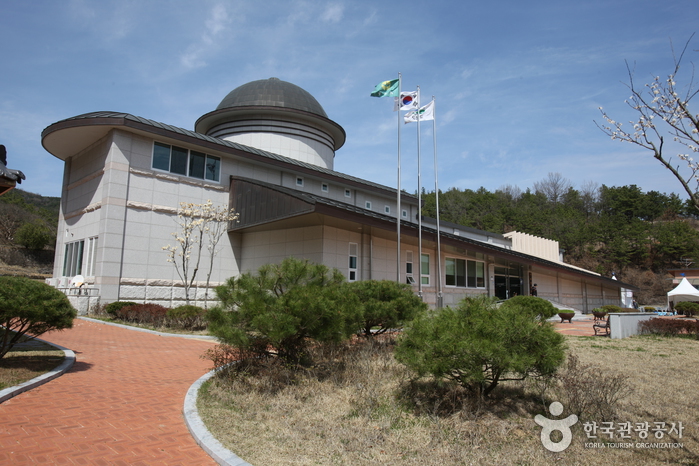

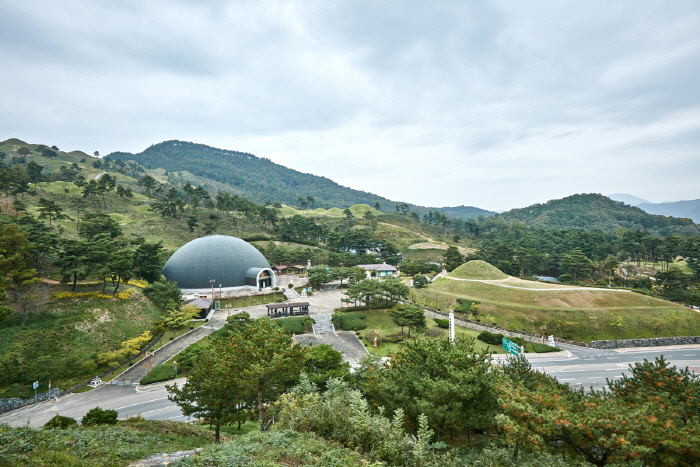
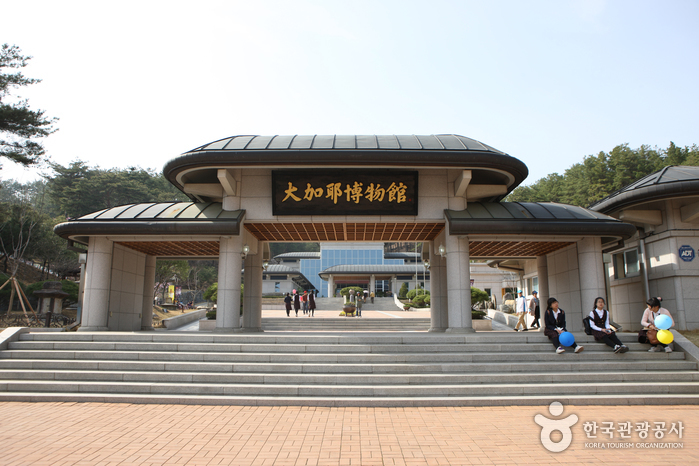
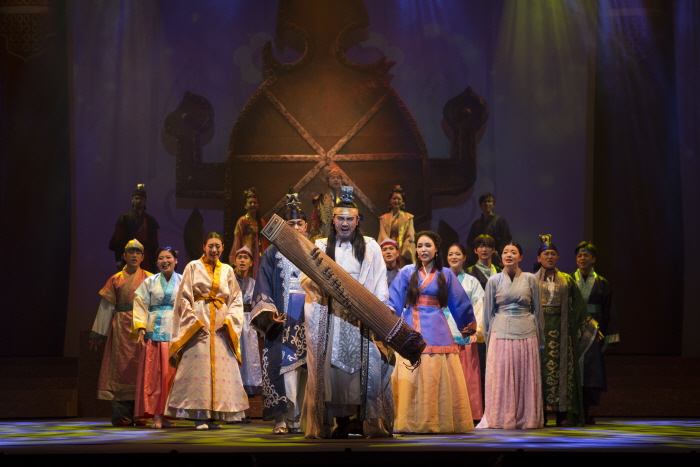
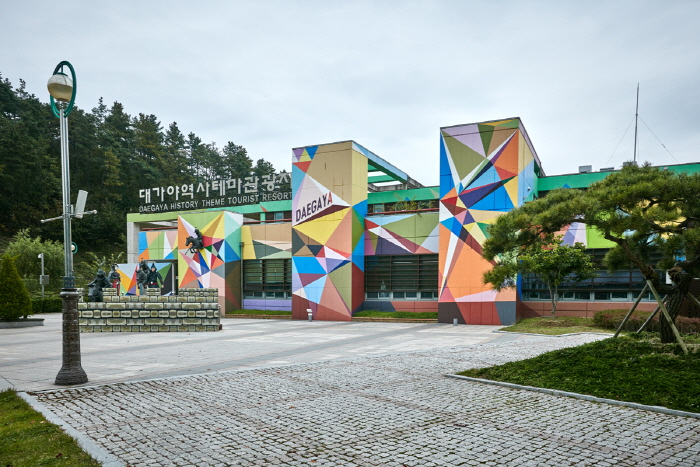
![Chuwoojae House [Korea Quality] / 추우재 [한국관광 품질인증]](http://tong.visitkorea.or.kr/cms/resource/67/2530167_image2_1.jpg)
![Yeonpung Gotaek (the Old House of Munchung) [Korea Quality] / 연풍고택/문충고가 [한국관광 품질인증]](http://tong.visitkorea.or.kr/cms/resource/11/2629411_image2_1.jpg)
![Ungidaek House [Korea Quality] / 개실마을영농조합법인(웅기댁) [한국관광 품질인증]](http://tong.visitkorea.or.kr/cms/resource/66/2573666_image2_1.jpg)
![Lang Studio [Korea Quality] / 랑 스튜디오 [한국관광 품질인증]](http://tong.visitkorea.or.kr/cms/resource/34/2629334_image2_1.jpg)
 Français
Français
 한국어
한국어 English
English 日本語
日本語 中文(简体)
中文(简体) Deutsch
Deutsch Español
Español Русский
Русский